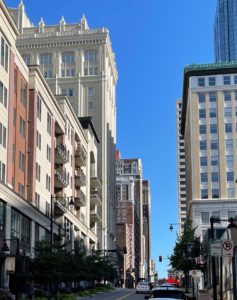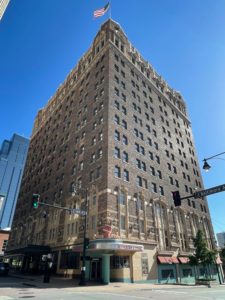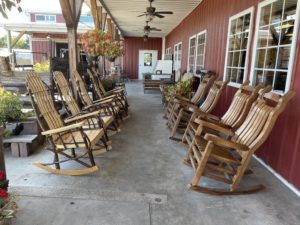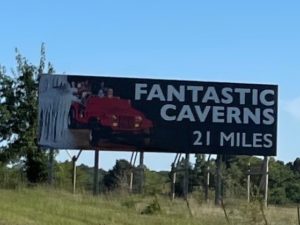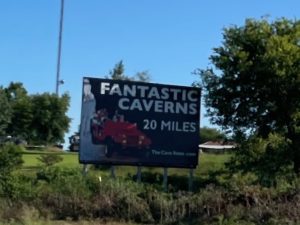In which Sid and Doris have a morning of architecture, see probably the world’s best WW1 museum and visit President Truman in his ice cream parlour.
Sid and Doris do have eclectic days. We start with a brief tour of the late 20s and early 30s architecture on Baltimore Avenue around the Power and Light Building. Kansas boomed in this time. Built in 1931 the 36 floor Art Deco Power and Light was the office building for the local utility and when opened was the tallEST building west of the Mississippi. Now that computers send out the bills it has been converted to flats. It still has a special lantern on top, now all LEDs. We will come back to special lighting.
Baltimore Avenue is also host to the Renaissance revival Midland Theatre, built in 1927. The frilly bits do look a bit 16th century with the leaves and flowers but how many floors?. It was the biggEST theater for 250 miles around. After a fallow period it has been redeveloped as a venue. It has similar decoration to the Hotel Kansas City which was a City Club with offices, bedrooms, bowling lanes, a gym, restaurants and areas to socialise. Is WeWork a new .com idea?
We stayed at the President which was a shell for 25 years after it closed in the 70s. When remodeled for today’s taste the number of rooms fell from 453 to 213. Their-EST might be the 1991 gathering of Presidents Richard Nixon, Gerald Ford, George Bush, Ronald Reagan and Jimmy Carter. There is no record of any of them performing in The Drum Room where Sinatra sang.
Still in search of architectural interest we drive over to the Community Christian Church, designed by Frank Lloyd Wright in 1940, mostly built in 1941 with its Steeple of Light finished in 1994. Partly it was blackout regulation (in Kansas?) that held back the idea of a Steeple of Light, four columns of blue light visible from ten miles away. We have found on this trip that churches are shut except at service time so we did not see the interior, a shame because FLW designed the furniture for many of his commissions. [Also it was very difficult to photograph – D – so here is the Wikipedia entry instead.]
 We were intrigued to see a very large WW1 Memorial Tower in Kansas City. Any tower is in danger of a Sid and Doris ascent and we did enjoy the view across the city, tracing rail, roads and rivers.
We were intrigued to see a very large WW1 Memorial Tower in Kansas City. Any tower is in danger of a Sid and Doris ascent and we did enjoy the view across the city, tracing rail, roads and rivers. 
The WW1 museum is the best we have seen (and we have been to the Imperial War Museum and the Ypres Cloth Hall and the Verdun ossuary).
It starts well back with the European Empires and inter-twined royal families, changing economies and growing nationalism especially within the Ottoman and Austro-Hungarian Empires, and there is no need to try to work out why ArchDuke Ferdinand mattered because his assassination was simply shown as the spark that triggered the power keg of war. Once the war started we rushed through the early years and collapse of Russia to get to the US entry into the war and the astonishing rate of mobilisation. The arsenal of democracy (part one) was quick to scale up. In 1918 there were five million Americans in France, more than the British and about the same as the French.
 The museum sets the US war participation in the context of the politics of the right to vote as women and minorities are solidly part of the war effort. There are as many posters, newspapers, guns, planes and uniforms as you could want. (There is also a helpful poster illustrating the suffragette movement onto which we have superimposed our journey so far.) It is great.
The museum sets the US war participation in the context of the politics of the right to vote as women and minorities are solidly part of the war effort. There are as many posters, newspapers, guns, planes and uniforms as you could want. (There is also a helpful poster illustrating the suffragette movement onto which we have superimposed our journey so far.) It is great.
There is a charming panel that tells how recruits went naked to the stores taking on pants, socks, trousers, shirts and coming out as soldiers. And of course there were Italian Americans, Spanish Americans and German Americans all becoming a little more American. If you have to go to Kansas do not miss this. It may even be vaut le voyage.
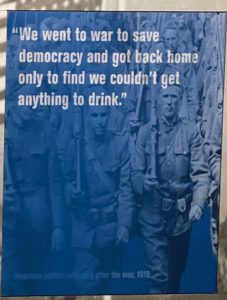 The museum also celebrates a US general who was offered to retreat after an encounter was going badly: “Retreat? Hell, we just got here.”
The museum also celebrates a US general who was offered to retreat after an encounter was going badly: “Retreat? Hell, we just got here.”
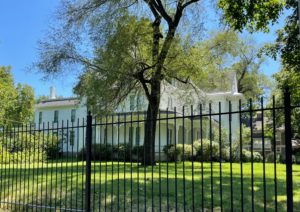
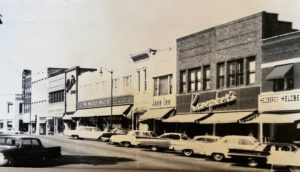 We are near Independence which was the jumping off point for the Oregon Trail, the Santa Fe Trail and the California Trail. This was as far up the Missouri as ships could bring the pioneers and their material. From here Go West. Independence was also the home of Harry Truman and though the house/museum is shut we can still celebrate the great man. We go to the soda fountain where he had his first job and order soda floats with Polly’s Soda made on the premises.
We are near Independence which was the jumping off point for the Oregon Trail, the Santa Fe Trail and the California Trail. This was as far up the Missouri as ships could bring the pioneers and their material. From here Go West. Independence was also the home of Harry Truman and though the house/museum is shut we can still celebrate the great man. We go to the soda fountain where he had his first job and order soda floats with Polly’s Soda made on the premises.
 We drive southbound, on straight roads through richer and richer countryside – the roadside grass now doesn’t need to be irrigated.
We drive southbound, on straight roads through richer and richer countryside – the roadside grass now doesn’t need to be irrigated.
Determined not to get onto the Interstate we go to Springfield via Pleasantville and Humansville and Osceola, where there is an Amish community who drive their horse and buggies along the dual carriage-way and earn a living by making furniture, food, soaps and gifts which they are selling in a trading post.
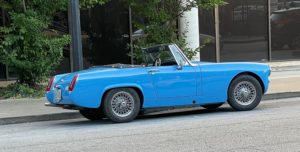
 Getting into Springfield we are happy to see we are on Route 66 that ran from Chicago to Los Angeles. And here is an MG Midget which, in the absence of any Amish buggies, is conveyance of the day on the road of the day.
Getting into Springfield we are happy to see we are on Route 66 that ran from Chicago to Los Angeles. And here is an MG Midget which, in the absence of any Amish buggies, is conveyance of the day on the road of the day.
The Hotel Vandivort is so welcoming, with much public space for beering and diary writing, and with Springfield and Missouri having such an interesting role in the Civil War we decide to stay an extra day. (Sshh, we stole that day from Kansas City.)
